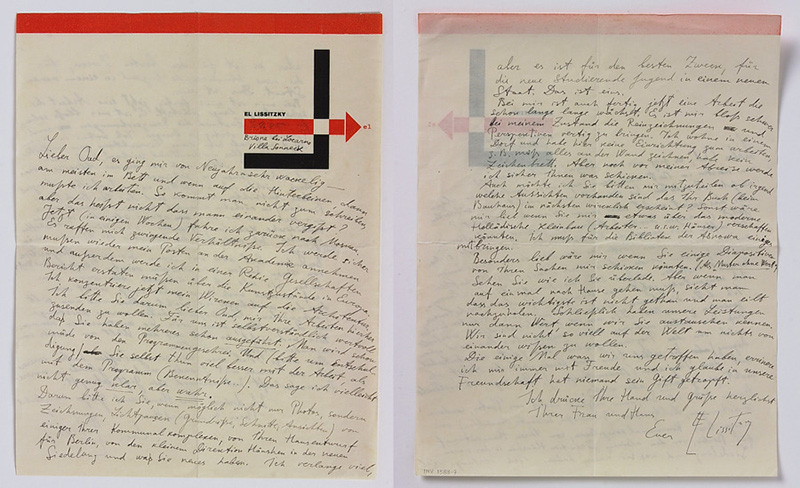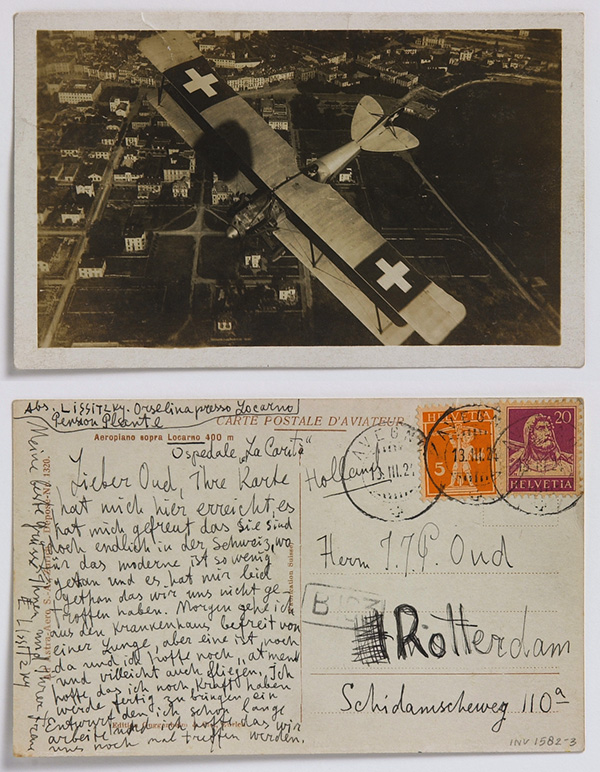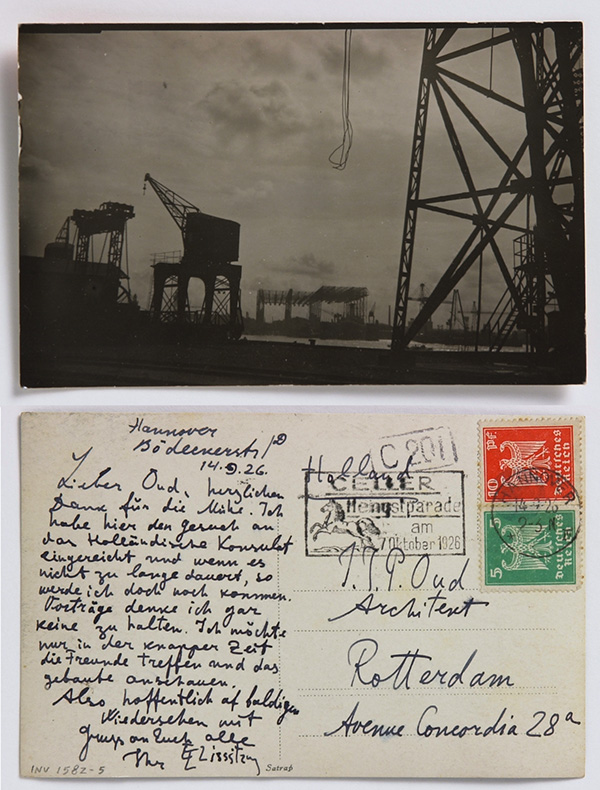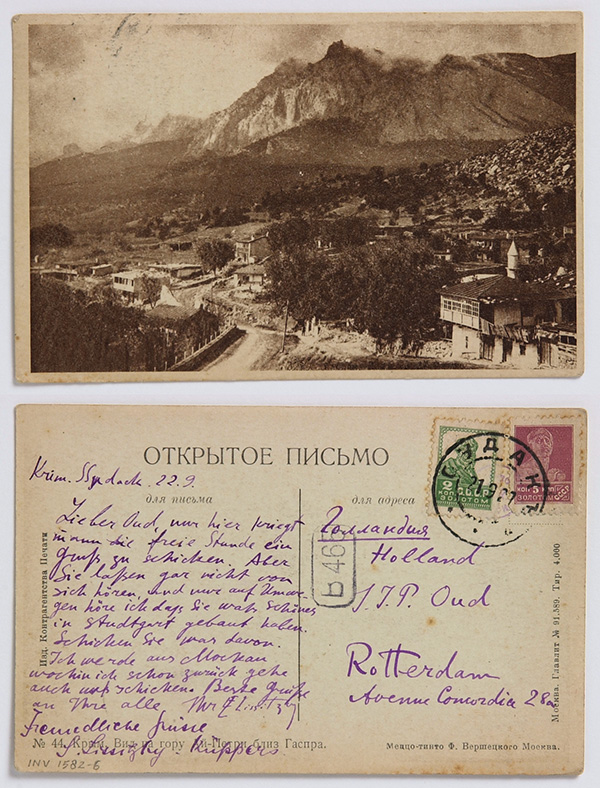ART CITIES:Eindhoven-Lissitzky & Oud In Dialogue
 Originally a publication, De Stijl was founded in 1917 by two pioneers of Abstract Art, Piet Mondrian and Theo van Doesburg. The magazine De Stijl became a vehicle for Mondrian’s ideas on art, and in a series of articles in the first year’s issues he defined his aims and used, perhaps for the first time, the term “Neo-plasticism”.
Originally a publication, De Stijl was founded in 1917 by two pioneers of Abstract Art, Piet Mondrian and Theo van Doesburg. The magazine De Stijl became a vehicle for Mondrian’s ideas on art, and in a series of articles in the first year’s issues he defined his aims and used, perhaps for the first time, the term “Neo-plasticism”.
By Efi Michalarou
Photo: Van AbbeMuseum Archive
In May 1923 the Russian artist El Lissitzky and the Dutch architect J.J. Oud met for the first time. Lissitzky was visiting the Netherlands in connection with the Russian Art Exhibition in the Stedelijk Museum Amsterdam in 1923. He gave lectures on the new art in Russia. The architect Oud was a member of the General Committee for Economic Reconstruction in Russia, the association which was co-responsible for organizing the exhibition in the Netherlands. An interesting correspondence developed between the two men which lasted until 1928. This correspondence was archived in the Van Abbemuseum Archives and is now exhibited in the Van AbbeMuseum’s library. Like other Avant-Garde Movements of the time, De Stijl emerged in response to the horrors of World War I and the wish to remake society in its aftermath. Viewing art as a means of social and spiritual redemption, the members of De Stijl embraced a utopian vision of art and its transformative potential. Associated with De Stijl, painters such as: Mondrian, van Doesburg and Ilya Bolotowsky, and architects such as: Gerrit Rietveld and J. J. P. Oud, adopted what they perceived to be a purer form of geometry, consisting of forms made up of straight lines and basic geometric shapes (largely rendered in the three primary colors), these motifs provided the fundamental elements of compositions that avoided symmetry and strove for a balanced relationship between surfaces and the distribution of colors. In Neo-Plasticism in Pictorial Art, Mondrian explained: “As a pure representation of the human mind, art will express itself in an aesthetically purified, that is to say, Abstract form. The new plastic idea cannot, therefore, take the form of a natural or concrete representation”. With Theo van Doesburg’s death in 1931, De Stijl lost its leader, and soon after faded from existence. However, the Movement’s key ideas of pure geometric abstraction and the relationship of form and function were maintained by many following van Doesburg’s death, and represent a fundamental contribution to modern and contemporary art, design, and architecture. Many of Rietveld’s buildings, for example, survive the longevity of the De Stijl Movement, and inspired great 20th Century architects, among them Mies van der Rohe.
Info: Curators: Diana Franssen and Willem Smit, Van AbbeMuseum, Bilderdijklaan 10, Eindhoven, Duration: 20/04-28/07/17, Tue-Fri 11:00-17:00, https://vanabbemuseum.nl



